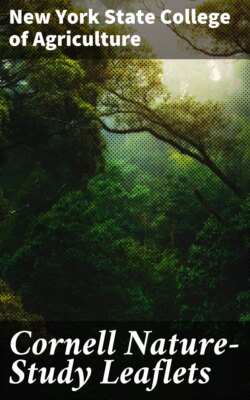Читать книгу Cornell Nature-Study Leaflets - New York State College of Agriculture - Страница 29
На сайте Литреса книга снята с продажи.
Second Grade.
ОглавлениеTeach the use of the flower. Do this by bringing in all flowers possible, and show that as the flower fades the fruit becomes evident. Let the pupils observe for themselves the fact that the flower exists for the sake of the fruit. Interest the pupils in all kinds of fruits and seeds. This is not the place to teach seed dispersion, but simply the forms and colors of fruits and seeds. Let the pupils also observe that insects carry pollen from flower to flower. Do not give the explanation of this to children of this age, but let them see the bees at work.
For this work see Plant World, by Mrs. Bergen, pp. 80-107.
Let the pupils observe the following things in plant physiology:
Flowers sleep: Botany, Bailey, p. 50; Lessons with Plants, p. 402; Plants, Coulter, pp. 9, 10, 48; Elements of Botany, p. 98.
Plants turn toward the light: Elements of Botany, p. 100; Botany, Bailey, p. 50; First Studies, p. 136.
Effect of frost on flowers and leaves.
Winter and spring work.—Seed germination: First Studies, pp. 1-24; Lessons with Plants, pp. 316-331; Botany, Bailey, pp. 164-171; Cornell Teachers' Leaflet, No. 1 (No. XXVIII, this volume); Plants, p. 307; Lessons in Nature-Study, p. 22.
Let the pupils observe in the field: Position of leaves when first open. A Reader in Botany, by Newell, Part I, p. 84.
Position of leaves and flowers in the rain. First Studies, p. 135; Elements of Botany, pp. 175-176; Plants, p. 51.
